Which Parent Carries The Autism Gene?

Understanding the Complex Inheritance of Autism Spectrum Disorder
Autism Spectrum Disorder (ASD) is a neurodevelopmental condition with a significant genetic component. While early beliefs suggested maternal inheritance may play a crucial role, recent research emphasizes the influence of paternal genetics. This article explores which parent predominantly carries the autism gene, unpacking the complex interplay of hereditary and spontaneous mutations, environmental factors, and advancing genetic research.
The Genetic Foundations of Autism: Complex and Polygenic
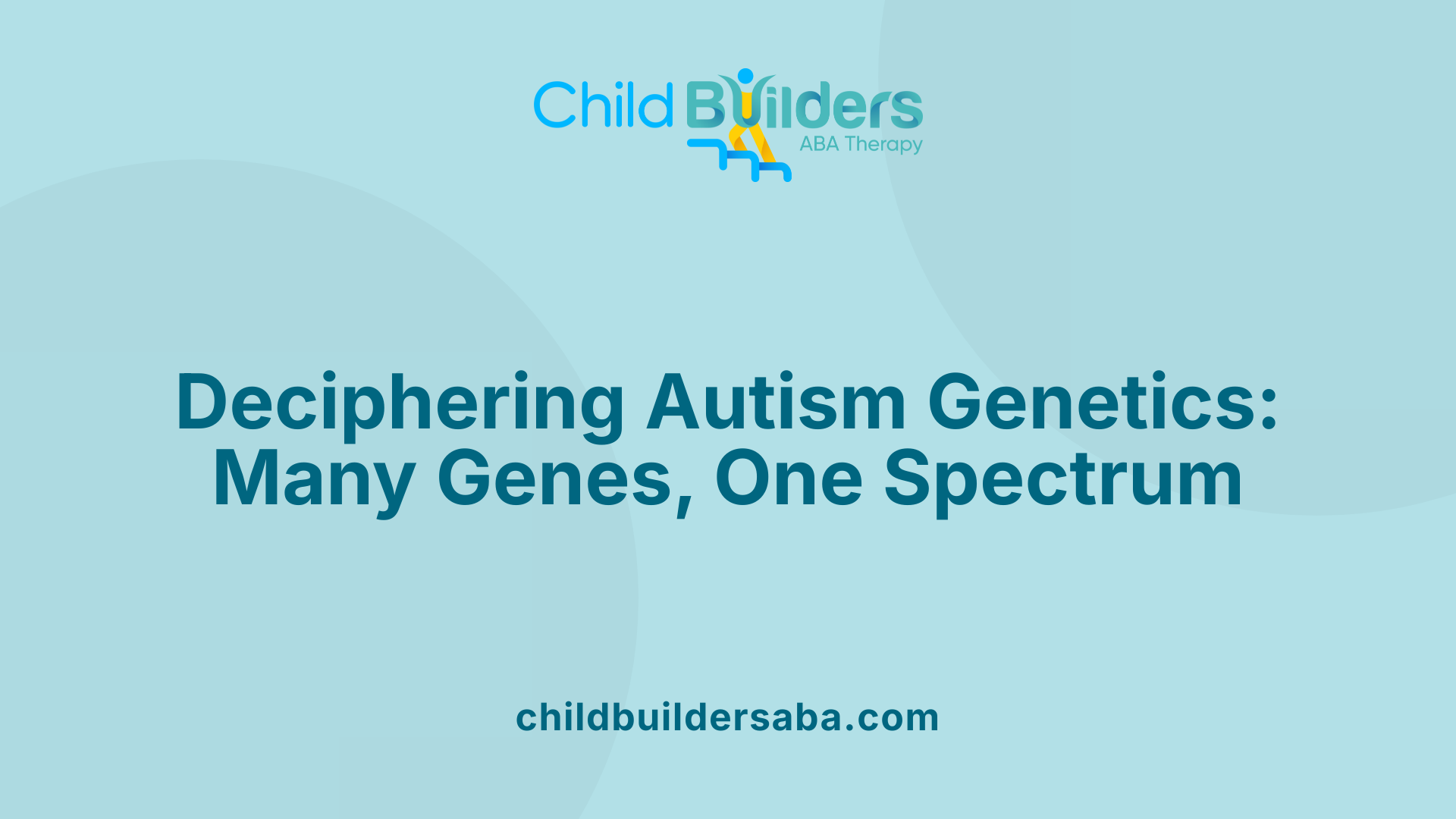
What are the genetic factors involved in autism inheritance?
Autism spectrum disorder (ASD) is highly influenced by genetics, with studies estimating that between 64% and over 90% of autism risk is attributable to inherited genetic factors. Research indicates that around 200 to 1,000 genes may play a role in susceptibility, each contributing small effects that collectively influence the likelihood of developing autism.
Twin studies have been instrumental in understanding genetic contributions, showing a significantly higher concordance rate in identical twins compared to fraternal twins. This strong genetic linkage underscores autism's heritable nature. Notably, genetics are not solely inherited in a straightforward manner; spontaneous or de novo mutations—mutations occurring anew in the child's genome—also significantly contribute. These mutations often involve copy number variations, such as deletions or duplications in regions like 16p11.23, which have been linked to autism.
Research has identified specific genes associated with ASD, including MECP2, SHANK3, and NLGN4. Variations in these genes can impact brain development, synaptic function, and neurochemical balance. Beyond these genetic alterations, epigenetic mechanisms such as DNA methylation modify gene expression without changing the DNA sequence itself, influencing autism development.
Overall, autism is a highly complex condition shaped by multiple genetic factors, multiple genetic mechanisms, and their interactions with environmental influences. The interplay of inherited mutations, spontaneous mutations, and epigenetic modifications forms a multifaceted genetic foundation for autism, highlighting its nature as a polygenic disorder.
Inheritance Patterns and Paternal Influence
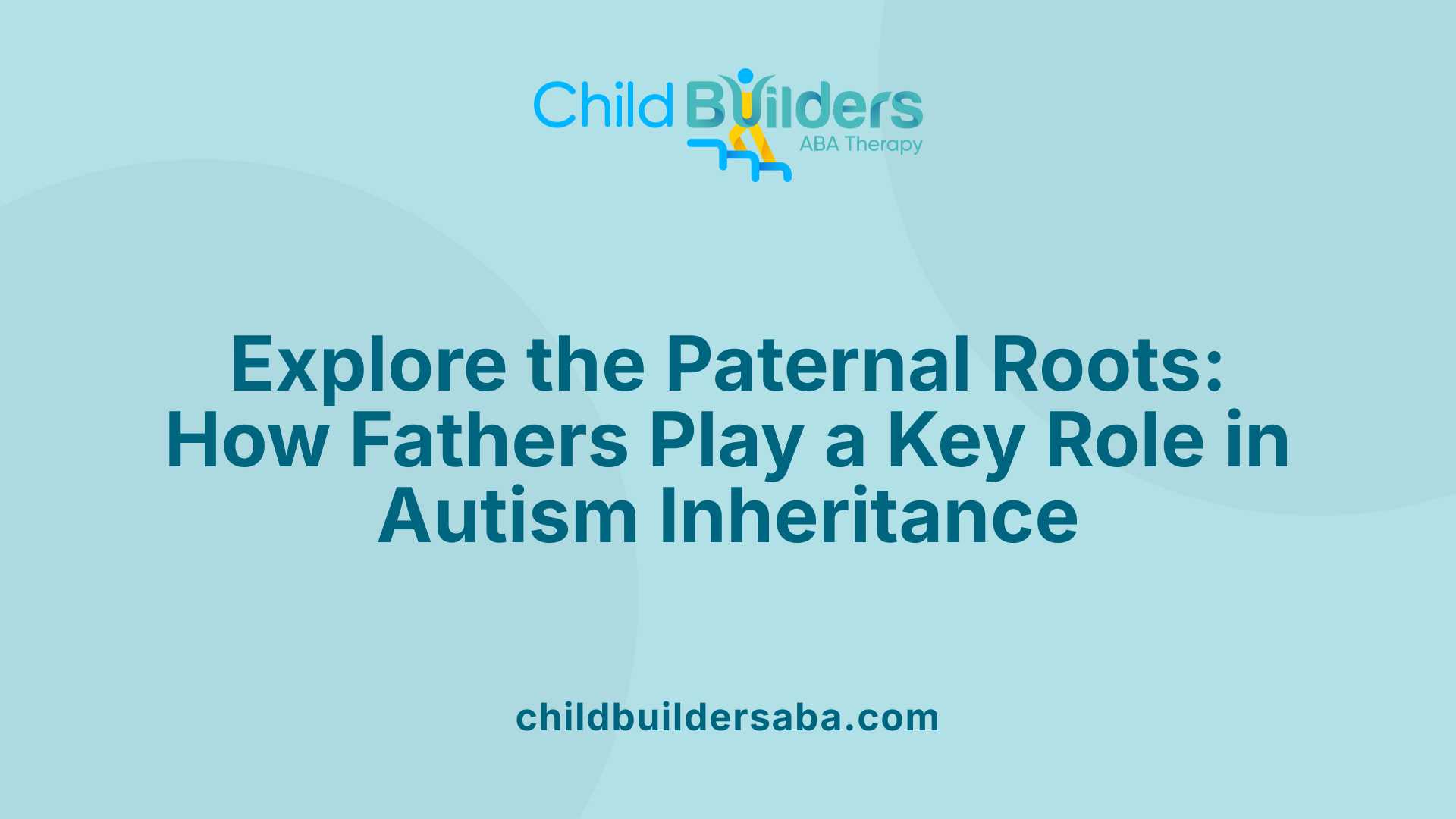
Is autism more likely inherited from the mother or the father?
Recent research sheds light on the complex inheritance patterns of autism, revealing that paternal genetic contributions are particularly influential. Studies involving thousands of families have shown that siblings with autism tend to share a significantly higher proportion of genetic material from their father than their mother. Specifically, these studies estimate that about 66% of the shared genetic material in such cases comes from the father, compared to roughly 30% from the mother.
This paternal inheritance pattern is further supported by analyses of family genetics, indicating that in families with multiple children with autism, there is a tendency for more autism-related genes to be passed down from the father. Scientists have found that siblings with autism share nearly twice as much genetic material from their fathers than from their mothers, emphasizing the importance of paternal genes.
Genetic research highlights that several factors contribute to autism, including spontaneous mutations, copy number variants, and multiple genes involved in brain development. Many of these mutations are inherited from the father, especially as paternal age increases, which can lead to new or spontaneous genetic changes.
While environmental influences also impact autism risk, the genetic evidence strongly points to a more substantial role for paternal inheritance. Overall, data suggest that autism is often more heavily inherited from the father than the mother, providing new insights into its genetic origins.
Genetic studies on sibling sharing and parent contribution
Research analyzing family genomes reveals notable patterns. For families with multiple children affected by autism, the sharing of genetic material from the father is consistently higher.
| Family Type | Proportion of Shared Maternal Genes | Proportion of Shared Paternal Genes | Implication |
|---|---|---|---|
| Multiple autistic children | ~30% | ~66% | Higher paternal influence |
| Single child affected | Less clear | Less clear | Less observable pattern |
Such studies challenge previous assumptions that maternal genes carry more risk for autism. Instead, they highlight the paternal side's significant role, especially in familial cases where multiple children are affected. These findings are opening new pathways for understanding autism inheritance and potential areas for genetic testing or intervention.
Recent research highlighting paternal inheritance
Newer discoveries in genetics are reinforcing the importance of paternal contributions. For example, research from the Cold Spring Harbor Laboratory involved analyzing thousands of family trees and genomes. It showed that in larger families with autism, offspring are more likely to inherit shared genetic material from their fathers.
This research also emphasizes the role of de novo mutations—mutations that occur spontaneously rather than being inherited directly. Such mutations are more common in paternal genomes and are associated with increased autism risk.
Understanding that both inherited and spontaneous mutations from the father can influence autism development helps refine diagnostic and treatment approaches. Researchers continue to explore how paternal age and genetic variation affect the likelihood of autism, emphasizing that paternal genetic influences are extensive and crucial to consider in future studies.
Spontaneous Mutations: A Major Contributor
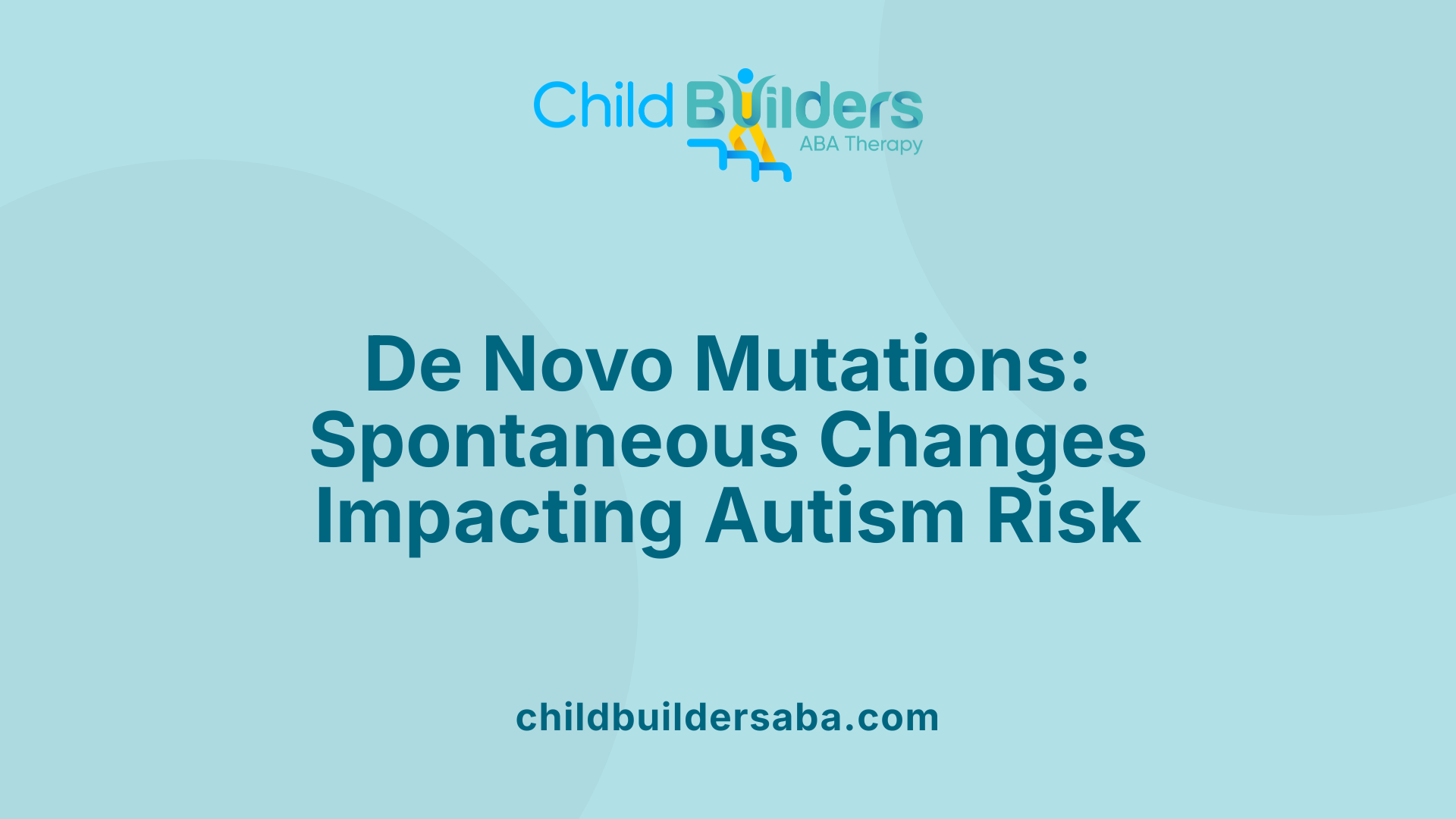
What are spontaneous mutations, and how do they influence autism?
Spontaneous mutations, also known as de novo mutations, are genetic changes that occur randomly in a child's DNA. Unlike inherited mutations, they are not passed down from the parents but happen anew in the child's genome. These mutations can affect specific genes involved in brain development and neural functioning.
Research shows that spontaneous mutations can significantly impact autism risk, especially in families with only one affected child. Estimates suggest that such mutations may account for approximately 30 to 67% of autism cases where no family history exists. These mutations can involve insertions, deletions, or duplications of DNA segments, often leading to disruptions in gene function.
Factors influencing the occurrence of these mutations include parental age, especially paternal age. Older fathers are more likely to pass on spontaneous mutations to their children, due to the increased number of cell divisions in sperm production over time. This age-related factor increases the probability of genetic alterations impacting autism-related genes.
The affected genes are often involved in critical processes like brain development, neural network formation, and neurochemical regulation. Mutations in these genes can interfere with normal brain wiring and functioning, thereby increasing the risk of autism spectrum disorder.
Overall, spontaneous mutations form a substantial part of the genetic landscape of autism. Determining their role helps researchers understand the complexity of autism's genetic origins and supports the development of targeted interventions.
Environmental Factors and Their Interplay with Genetics
Are environmental factors during pregnancy involved in autism risk?
Research indicates that environmental influences during pregnancy can play a significant role in increasing the risk of autism spectrum disorder (ASD). These factors often interact with genetic predispositions, impacting fetal brain development.
One important environmental aspect involves maternal infections during pregnancy. Infections such as rubella, cytomegalovirus, and influenza have been linked to a higher likelihood of ASD in children. These infections can trigger immune responses in the mother, releasing cytokines that may disrupt normal brain development in the fetus.
Furthermore, exposure to environmental toxicants, including air pollution, pesticides, and heavy metals, has been associated with an elevated autism risk. These substances can cause inflammation, oxidative stress, and hormonal imbalances, which interfere with neurodevelopment. Pesticides, in particular, have been scrutinized for their potential to alter brain growth via mechanisms affecting neurotransmitter systems.
Maternal health conditions also contribute to the risk. Obesity and gestational diabetes are linked with increased inflammation and metabolic disturbances, both of which can influence fetal brain development. These conditions may predispose the developing brain to structural and functional alterations that intersect with genetic vulnerabilities.
In summary, environmental factors such as maternal infections, exposure to pollutants, and health issues like obesity and diabetes play crucial roles during pregnancy. They do not act in isolation but interact with genetic susceptibilities, collectively shaping the neurodevelopmental environment and influencing autism risk.
Role of Female Protective Effect and Maternal Traits
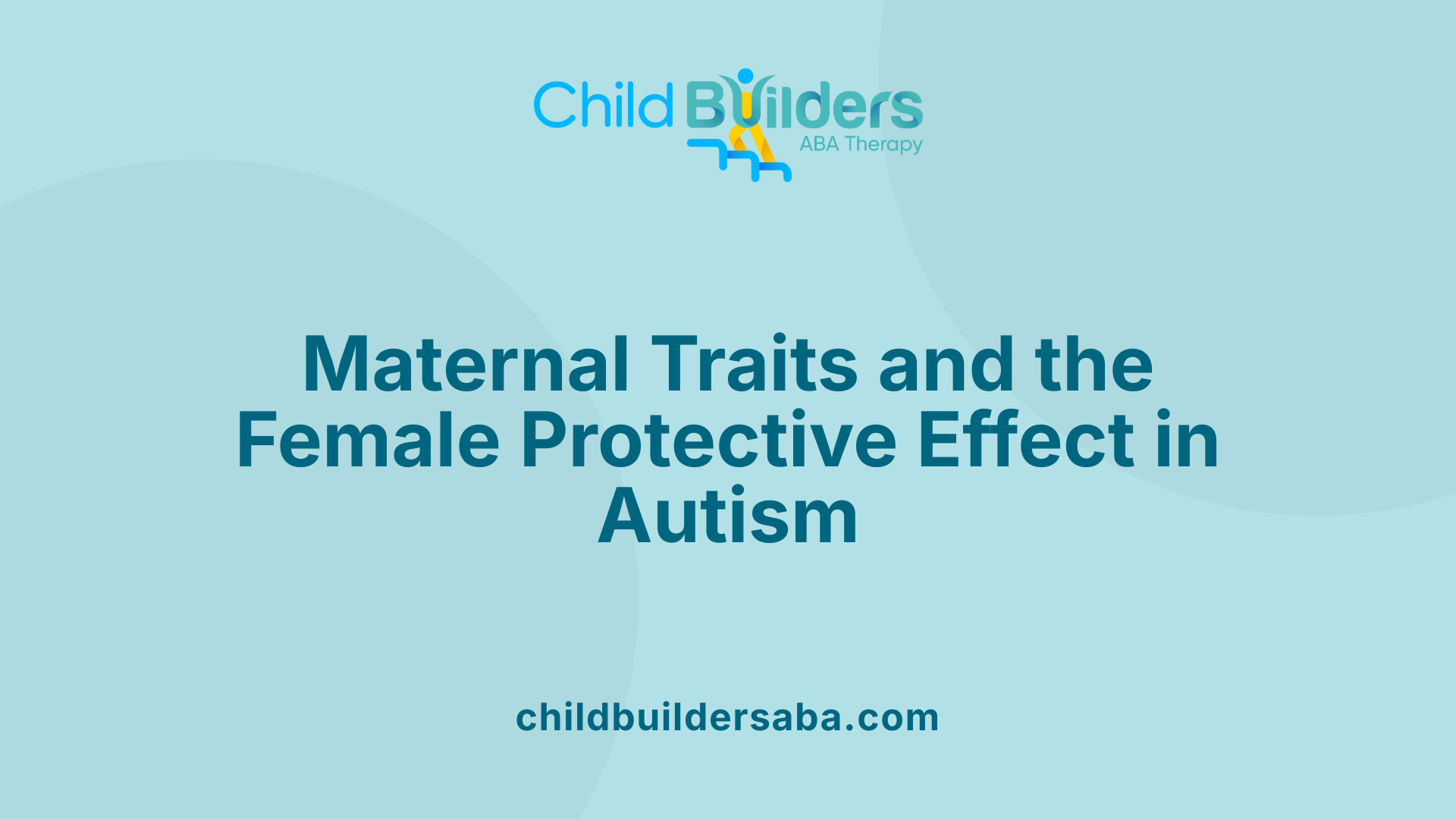 Research indicates that subtle behavioral traits in mothers, particularly related to pragmatic language and social communication, are more frequently associated with autism in their children. Mothers exhibiting mild autism-related characteristics often possess gene variants that are linked to autism, even if they do not display overt symptoms themselves.
Research indicates that subtle behavioral traits in mothers, particularly related to pragmatic language and social communication, are more frequently associated with autism in their children. Mothers exhibiting mild autism-related characteristics often possess gene variants that are linked to autism, even if they do not display overt symptoms themselves.
This phenomenon supports the idea of a 'female protective effect,' where women seem to require a higher burden of genetic risk factors to manifest autism traits. As a result, women can carry autism-related gene variants without developing the condition, yet still pass these genetic traits to their offspring. This is evidenced by studies showing that mothers with language difficulties or traits characteristic of the broad autism phenotype tend to have children with more significant social-communication challenges.
Interestingly, recent research has demonstrated that genetic markers associated with autism are often inherited from either parent, with some findings suggesting that paternal inheritance may sometimes play a bigger role. Nevertheless, the presence of autism-related gene variants in women without autism emphasizes their capacity to carry risk genes silently.
In summary, maternal traits tied to autism, especially language and social communication difficulties, are important in understanding the genetic transmission of autism. These traits, combined with the 'female protective effect,' help explain why autism is more prevalent in males and how mothers can be asymptomatic carriers of risk genes, influencing the likelihood of their children developing autism.
Implications for Diagnosis, Treatment, and Family Planning
Genetic testing is a vital tool in understanding autism risk, especially for parents who wish to assess their child's probability of developing the condition. These tests help identify specific genetic variants that increase the likelihood of autism and related developmental disorders, such as Fragile X syndrome and Rett syndrome. Techniques like chromosomal microarray analysis and exome sequencing can detect genetic causes in about 10 to 30 percent of autism cases, particularly when other health issues like intellectual disability are present.
While genetic testing does not directly diagnose autism, it provides valuable insights into inherited genetic factors that may contribute to the condition. Most autism cases involve inherited mutations, which tend to run in families, and spontaneous mutations that occur anew in the child's genome. The understanding of these genetic influences aids in better risk assessment and helps tailor personalized treatment approaches.
Moreover, genetic testing informs family planning decisions by revealing carrier statuses and potential risks for future children. It allows families to make more informed choices and consider options like genetic counseling.
It is important to note that the ethical considerations and personal views regarding genetic testing vary among individuals, especially within the autistic community. Some may see it as empowering, while others might have reservations based on ethical, cultural, or personal beliefs.
In summary, genetic testing enriches our comprehension of autism's biological roots, guiding diagnosis, treatment, and planning. Continued research aims to improve the precision and scope of these tests, making them more accessible and informative for families and clinicians alike.
Autism Prevalence and the Myth of Rising Incidence
Recent data indicates that the perceived rise in autism cases is largely due to broader diagnostic criteria, improved screening tools, and greater public awareness. These factors make it easier to identify and diagnose autism spectrum disorder in more individuals than before.
It's important to understand that this increase does not necessarily mean that autism is becoming more common in the population. Instead, it reflects better detection and a wider understanding of the condition.
Advancements in screening have allowed clinicians to detect subtle signs earlier, and increased awareness has encouraged more families to seek assessments. This has expanded the pool of diagnosed cases, giving the impression of an increase in prevalence.
Overall, the actual rate of autism has likely remained stable, with the numbers rising because of factors related to recognition and diagnosis. This understanding helps dispel myths and emphasizes the importance of accurate, ongoing research to track true prevalence.
Conclusion: The Bigger Picture of Autism Genetics and Inheritance
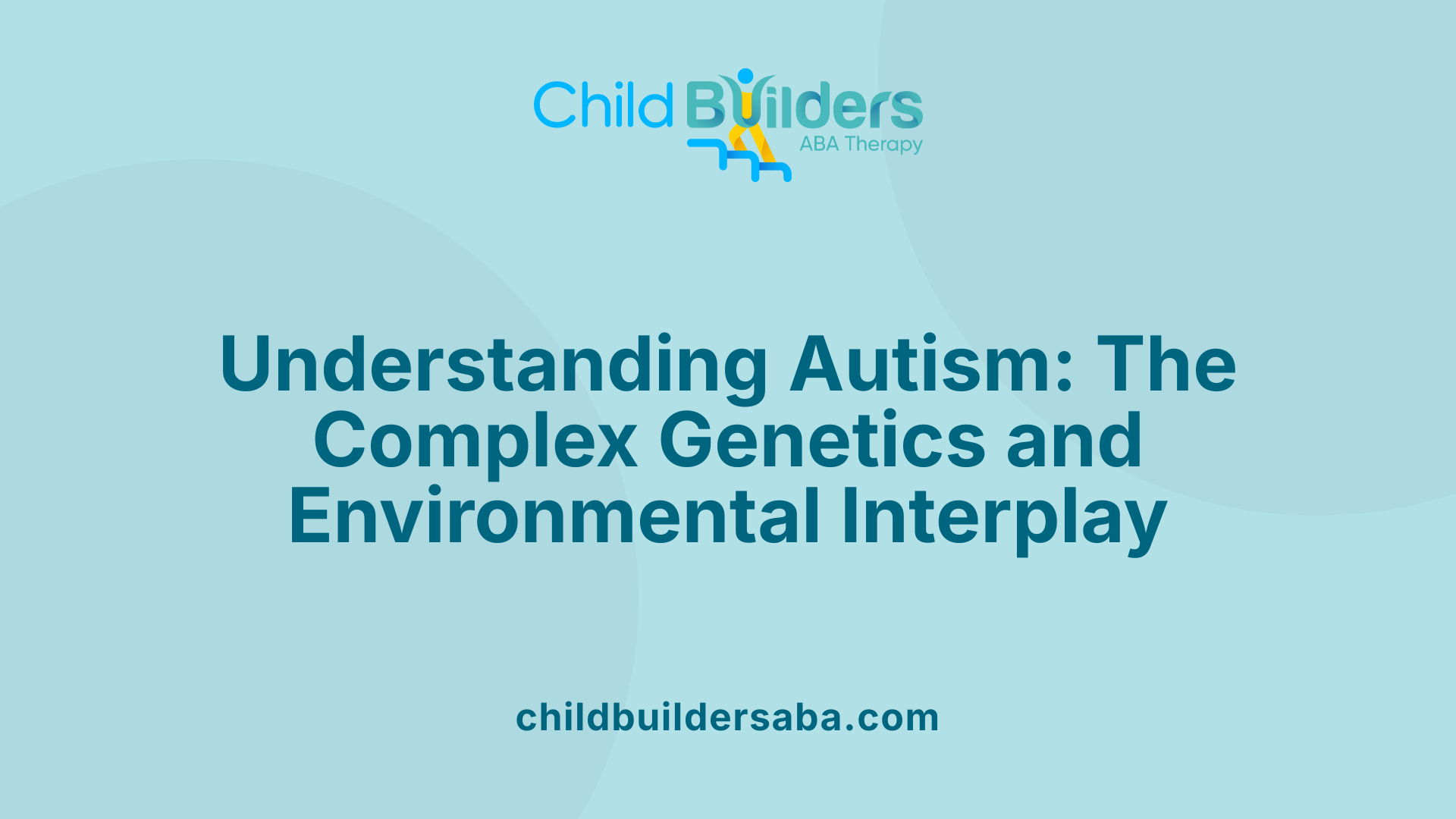 Autism has a significant genetic component, with research indicating that inheritance from both parents influences a child's risk. While genetics account for about 50-80% of autism cases, many mutations occur spontaneously and are not inherited. Studies show that fathers often pass more autism-related genes, especially in families with multiple affected children, challenging earlier assumptions favoring maternal influence.
Autism has a significant genetic component, with research indicating that inheritance from both parents influences a child's risk. While genetics account for about 50-80% of autism cases, many mutations occur spontaneously and are not inherited. Studies show that fathers often pass more autism-related genes, especially in families with multiple affected children, challenging earlier assumptions favoring maternal influence.
Furthermore, autism results from a complex interplay of genetic variations, such as mutations in brain development genes, and environmental factors like parental age and prenatal exposure to pollutants. These factors are involved early in fetal development, emphasizing the importance of genetic stability and environmental health.
Ongoing research continues to uncover specific genes and mechanisms involved in autism, supporting personalized approaches for diagnosis and treatment. Understanding how both parents contribute to genetic risk, along with environmental influences, offers a holistic view of autism inheritance and highlights the need for comprehensive strategies in research and care.
In sum, the genetic landscape of autism is intricate, involving inherited, spontaneous, and environmental factors, reinforcing the importance of continued scientific exploration to better understand, prevent, and treat autism spectrum disorder.
Looking Forward: Advances and Ongoing Questions in Autism Genetics
The field of autism genetics is rapidly evolving, revealing complex inheritance patterns involving both maternal and paternal contributions, spontaneous mutations, and environmental interactions. While current research highlights a notable paternal influence, the understanding of how genetics influences autism continues to deepen, promising new avenues for diagnosis, intervention, and prevention. Emphasizing a holistic approach that considers all genetic and environmental factors will be crucial in unraveling the intricate puzzle of autism inheritance and improving outcomes for families worldwide.
References
- Who Carries the Autism Gene - Mother or Father?
- What causes autism? | Autism Speaks
- Traits in mothers may signal gene variants for autism | The Transmitter
- Is Autism Genetic? | UCLA Medical School
- Where does autism come from when it doesn't run in the family?
- Which Parent Carries The Autism Gene? - Xcode Life
- Which Parent Carries Autism Gene? | Blossom ABA Therapy
- Siblings with autism share more of dad's genome, not mom's
- Unveiling the Truth Which Parent Carries Autism Gene?





































































































